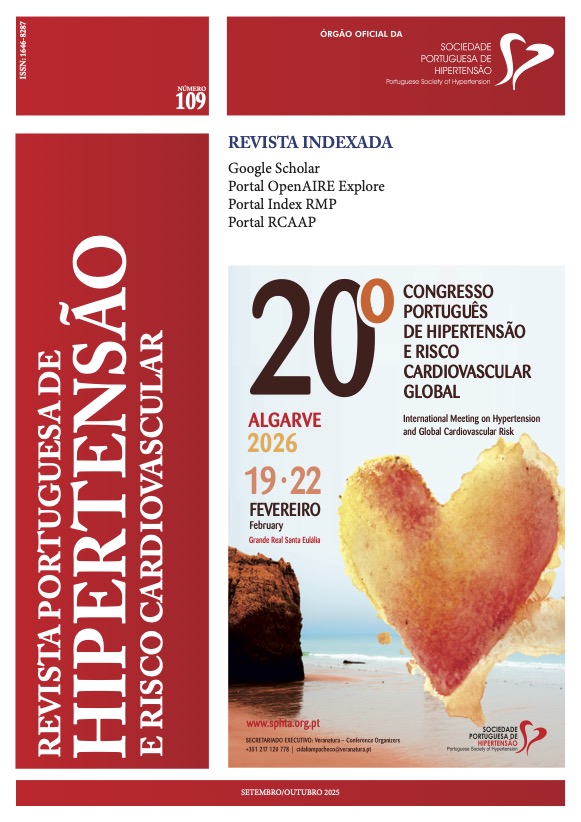UNSTUDIED ARTERIAL HYPERTENSION: A LONG-TERM CATASTROPHE?
DOI:
https://doi.org/10.58043/rphrc.184Keywords:
Hipertensão secundária, Hiperaldosteronismo primário, Doença cardio-renalAbstract
Arterial hypertension (HTN) is one of the leading modifiable risk factors for cardiovascular and renal disease. Primary aldosteronism (PA) is a treatable cause of secondary hypertension that remains frequently underdiagnosed. Early identification can prevent severe complications. We report the case of a 57-year-old man with long-standing hypertension and poor blood pressure control, admitted for acute heart failure. Notable findings included persistent hypokalemia, chronic kidney disease, and left ventricular hypertrophy. Hormonal evaluation, despite ongoing antihypertensive therapy, revealed markedly elevated plasma aldosterone (1405 ng/dL), suppressed plasma renin activity (0.34 ng/mL/h), and an aldosterone-to-renin ratio >40, confirming the diagnosis of primary aldosteronism. Magnetic resonance imaging showed mild thickening of the left adrenal gland. This case highlights the importance of etiological investigation in resistant hypertension. The diagnosis of primary aldosteronism should be considered in patients with resistant hypertension, hypokalemia, and evidence of target organ damage. A targeted workup—even while maintaining antihypertensive treatment—can lead to accurate diagnosis and may prevent irreversible cardiovascular and renal complications.Downloads
References
Funder JW, Carey RM, Mantero F, Murad MH, Reineke M, Shibata H, et al. The management of primary aldosteronism: case detection, diagnosis, and treatment: an Endocrine Society clinical practice guideline. J Clin Endocrinol Metab. 2016;101(5):1889–916.
Williams B, Mancia G, Spiering W, Agabiti Rosei E, Azizi M, Burnier M, et al. 2020 ESC/ESH Guidelines for the management of arterial hypertension. Eur Heart J. 2020;41(33):255–323.
Vaidya A, Mulatero P, Baudrand R, Adler GK. The expanding spectrum of primary aldosteronism: implications for diagnosis, pathogenesis, and treatment. Endocr Rev. 2018;39(6):1057–88.
Rossi GP, Bisogni V, Bacca AV, Belfiore A, Cesari M, Mantero F, et al. The diagnosis of primary aldosteronism: value of adrenal vein sampling. Endocrinol Metab Clin North Am. 2019;48(4):717–35.
Brown JM, Siddiqui M, Calhoun DA, Carey RM, Hopkins PN, Williams GH, et al. The unrecognized prevalence of primary aldosteronism: a cross-sectional study. Ann Intern Med. 2020;173(1):10–20.
Ruilope LM, Zanchetti A. Hypertension in the metabolic syndrome: its role in cardiovascular risk. J Hypertens. 2005;23(3):327–36.
Sarafidis PA, Bakris GL. State of hypertension management in chronic kidney disease. Curr Opin Nephrol Hypertens. 2020;29(5):437–44.
Schmieder RE, Mann JFE, Schumacher H, McQueen MJ, Dagenais GR, Yusuf S. Changes in albuminuria predict mortality and morbidity in patients with vascular disease. J Am Soc Nephrol. 2011;22(7):1353–64.
Young WF Jr. Primary aldosteronism: renaissance of a syndrome. Clin Endocrinol (Oxf). 2007;66(5):607–18.
Downloads
Published
How to Cite
Issue
Section
License
Copyright (c) 2025 Andreia Mandim

This work is licensed under a Creative Commons Attribution 4.0 International License.




